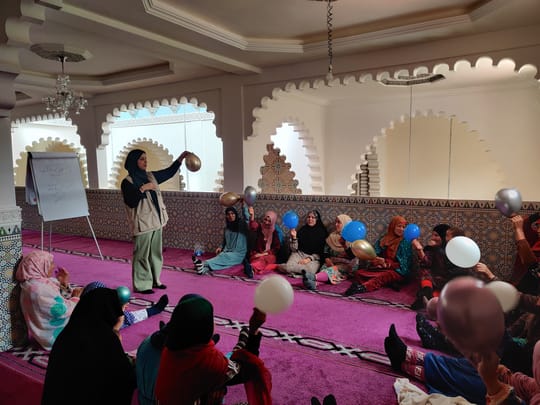It is easy to dismiss stories as caricatures of real life, amusing memories of something that was real but which through storytelling becomes fictional. They are tales which seek to emulate the “real world” but which will always ultimately fall short because they are unreliable and antithetical to empiricism. But what if, instead, stories were deeply valued for what they are — frameworks through which human meaning is created and ascribed? Afterall, stories are conduits for something imminently real, something emphatically human that is neither purely factual nor purely fictional. It is something that inhabits a liminality.
Minute details of stories are unimportant because when stories are reduced to their essence they are not about factual fallacies or accuracies but rather about what the storyteller prioritizes in their retelling. And what the women of the MilaH Imagine Workshop seemed to find in retelling their stories was neither fact nor fiction but rather a form of inner shelter and confidence.
On the first day of the Imagine Workshop, the facilitators of the High Atlas Foundation asked the participants to retell their stories of the 2023 earthquake. For many women, these were stories embedded in their minds through a combination of trauma and constant retelling. They were both deeply personal and implicitly communal stories that bore a sort of resemblance to a recitation — these women had told these stories before and had curated the details. So many of them seemed to be quite matter-of-fact in their retelling of the earthquake itself — “I was in x place when I felt extreme shaking, and I ran out onto the street in z clothing.” For them, a question which invited only their story of the momentary earthquake itself seemed to be missing the point entirely.
So instead, they took the facilitators’ question for what it actually was — an invitation to explore their experiences once the shaking had ceased. After all, it was not the earthquake which had stuck with them, nor was it the earthquake itself which created trauma but rather the aftershocks, both physical and emotional. For days, many were scared to return to what was left of their homes, afraid that the spaces which had once sheltered their families would turn inwards on them and collapse. Perhaps these were not unambiguous shelters — a woman’s relationship to a domestic space is rarely ever anything but complicated given the intersectional relationships and expectations which exist in that space.
But the suddenness with which these spaces became actively dangerous seemed to be the most striking part of the earthquake. This danger was a theme to which many women returned over the course of the four days. What about the pandemic when apartments became breeding grounds for infection and houses became dangerously insular? What about the people who after the earthquake took advantage of these women’s fears? And what about the insecurities that took root internally, at the foundation of a woman’s psyche? These women told their stories about the pandemic, about the earthquake, and about their insecurities. The factual accuracy of the details were unimportant because what emerged irrespective of accuracy was that these women’s lives had been dominated by an unmitigated feeling of danger and insecurity in places — both physical and metaphoric — which were intended to shelter them.
I sat in that room for almost 12 hours with these women, someone who speaks only some formal Arabic and very little Darija, so the details of these stories quite literally escaped me. But if stories are conceptualized as “efforts to organize and explain experience,” then the details of the experience itself, while ideally understood, were not particularly material to the organization and explanations which I observed.
Because what I ultimately saw was a group of women who had struggled to find shelter, internal and external, in their lives but who were, in this workshop, able to build a community. And however fleeting that formal, communal safety and shelter may be, hopefully the process of telling their stories and organizing their experiences will enable internal structures which can shelter them irrespective of their externalities.
